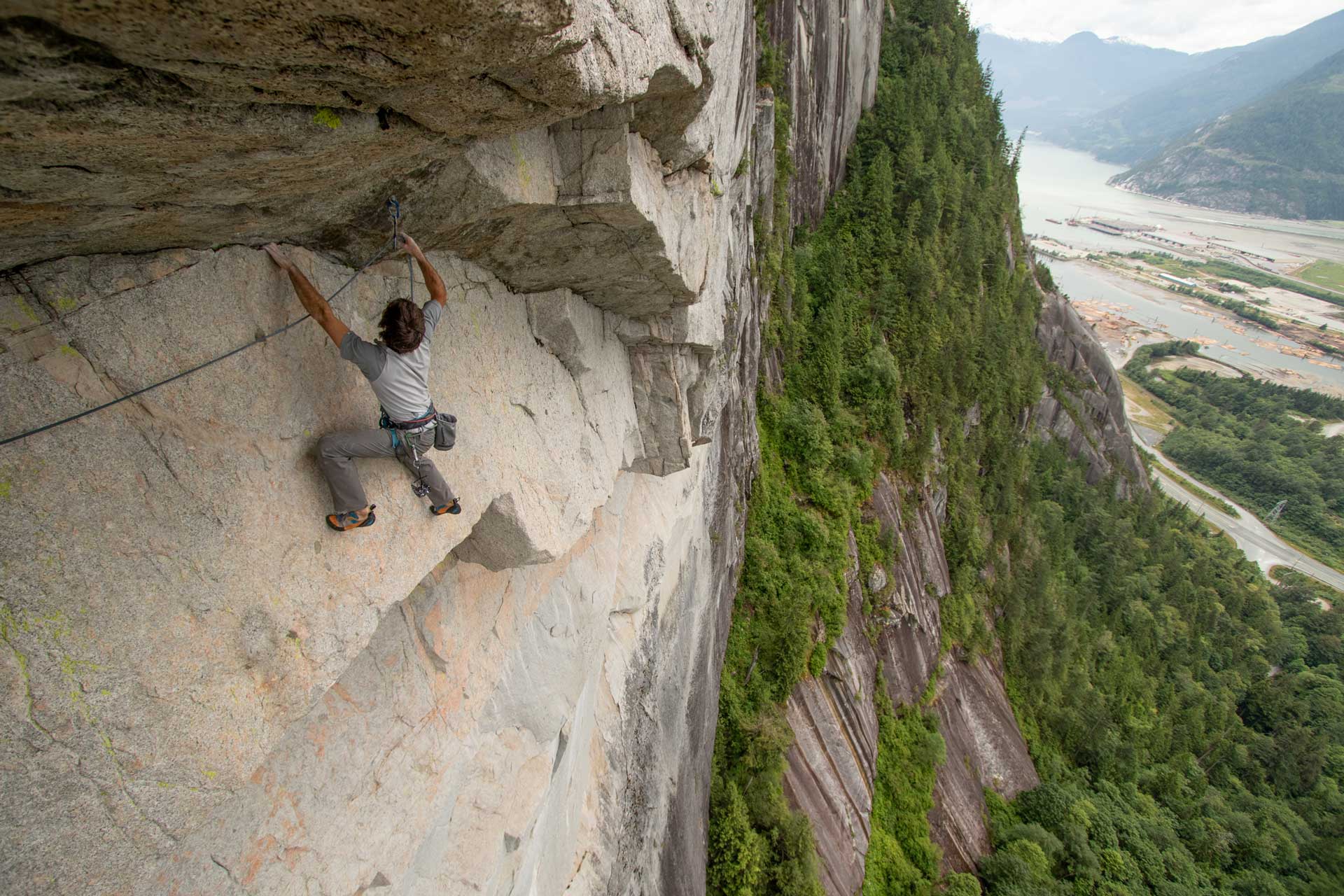Featured image climber: Tony McLane // Featured image credit: Kieran Brownie
Nestled in the UNESCO Biosphere Region of Howe Sound, the iconic granite monolith Stawamus Chief towers 700m above the water of its surrounding town Squamish, in beautiful British Columbia. For the First Nations people of Squamish (Skwxwú7mesh), the Chief holds a spiritual significance—traditions say it was once a longhouse that was transformed to stone by Xáays, the spirit-beings known as the Transformer Brothers in this area. Their name for the mountain, Siyám’ Smánit, refers to someone deeply respected, such as a teacher, leader or elder. With equal respect and significance, the climbing community see the birthplace of climbing in the area in a similar light.
Since climbers started coming to Squamish in the early 50s, the Chief has become a renowned world-class climbing destination; each season drawing visionary climbers who want to leave their mark on the rock and advance the sport. Kelsey Watts, a local climber, says that the Chief’s seemingly endless, high-quality climbing potential and ease of access are what make it such a special place for the community. For them, the Chief is Canada’s answer to California’s famous Yosemite National Park and El Capitan; a rock that has, in recent years especially, become ubiquitous with climbing culture and the pushing of boundaries.
“Last year alone, the Chief saw four or five major rockfalls after severe weather events”
Throughout 2021 however, an unprecedented number of rockfalls caused closures on famous routes across the Chief, some of which won’t reopen until Spring 2022. The year was also punctuated with severe weather events and periods of extreme temperatures, likely exacerbated by climate change. This got me thinking, is climate breakdown impacting Squamish’s climbing community? And if so, how can these climbers help the places they enjoy?
Formed 100 million years ago by volcanic activity, subsequent glacial erosion gave the Chief its characteristically polished, steep technical faces and inviting cracks. As Wesley Ashwood— a Geotechnical Engineer who often works on the Chief—says, rockfalls are commonplace in landscapes such as this, where coastal elements are funnelled down the fjord, battering the rock with wind, rain and snow.
Despite this, rocks generally change over really long geological timeframes; similarly to climate, the rate of change is traditionally so slow that we wouldn’t notice. But as climate change appears to be fast-forwarding through extreme weather events and rapid temperature variability, it’s not a giant leap to assume these environmental factors are also impacting rock features more quickly than previously seen too.







